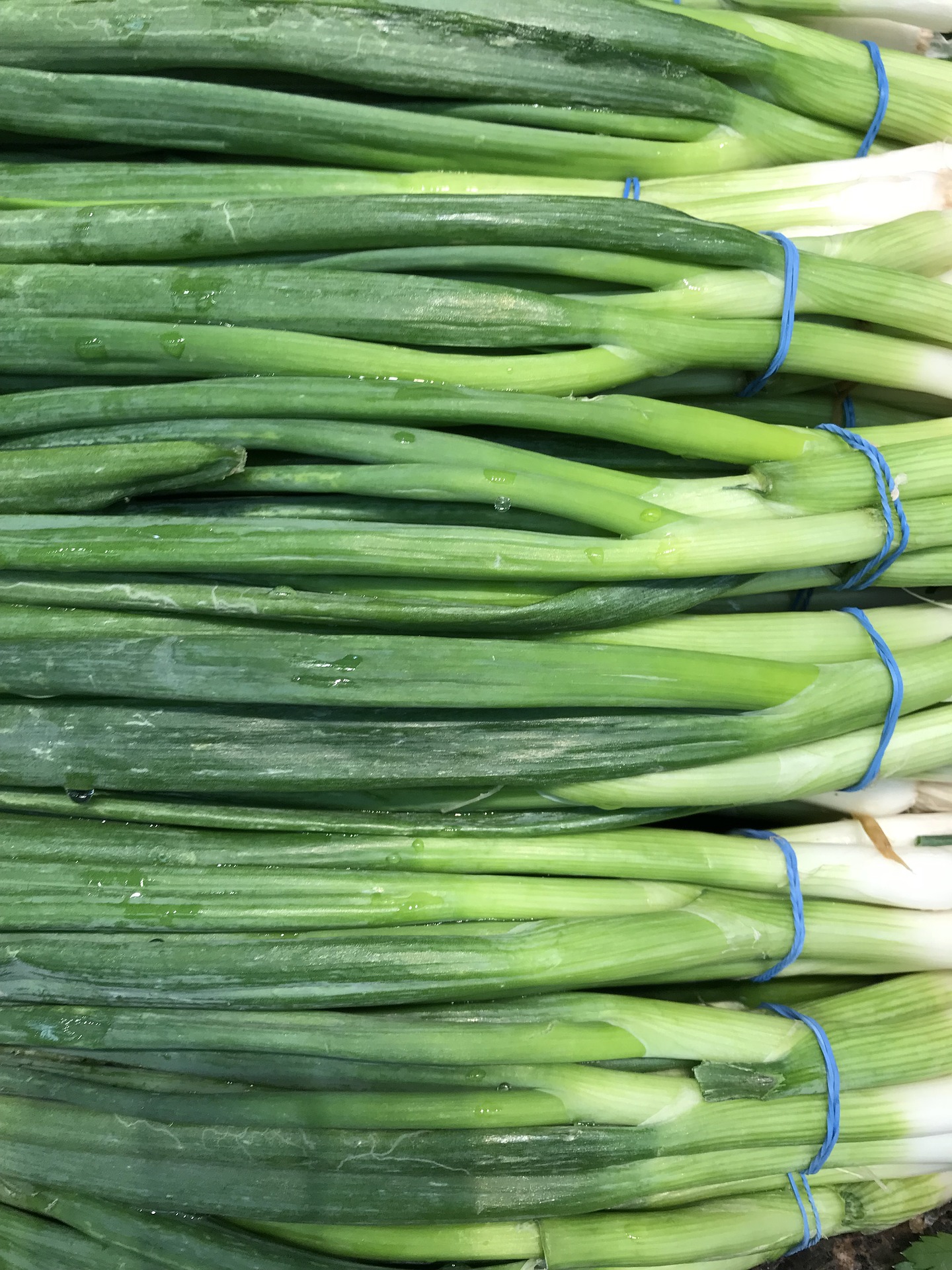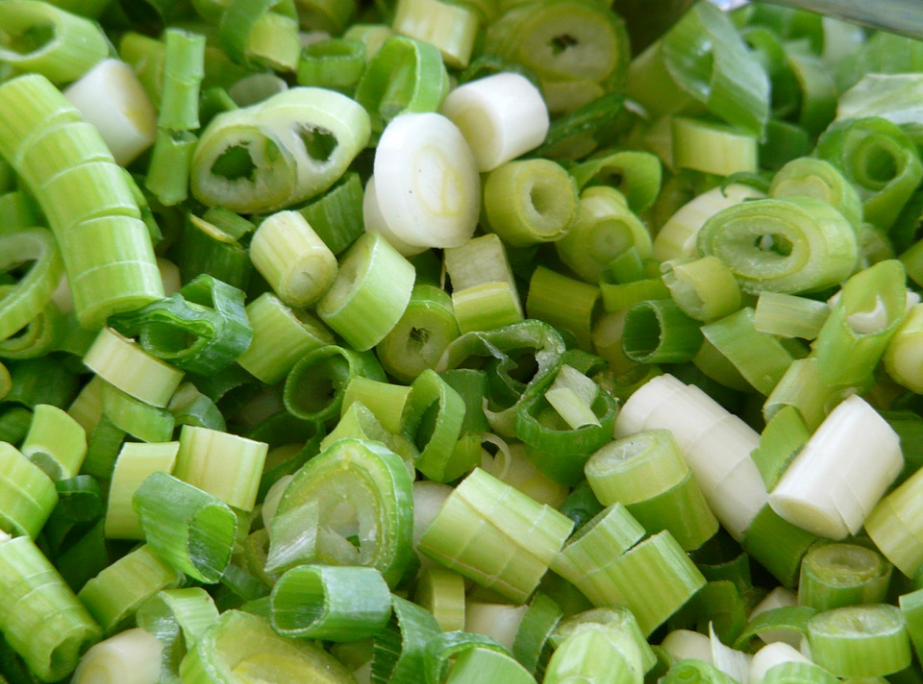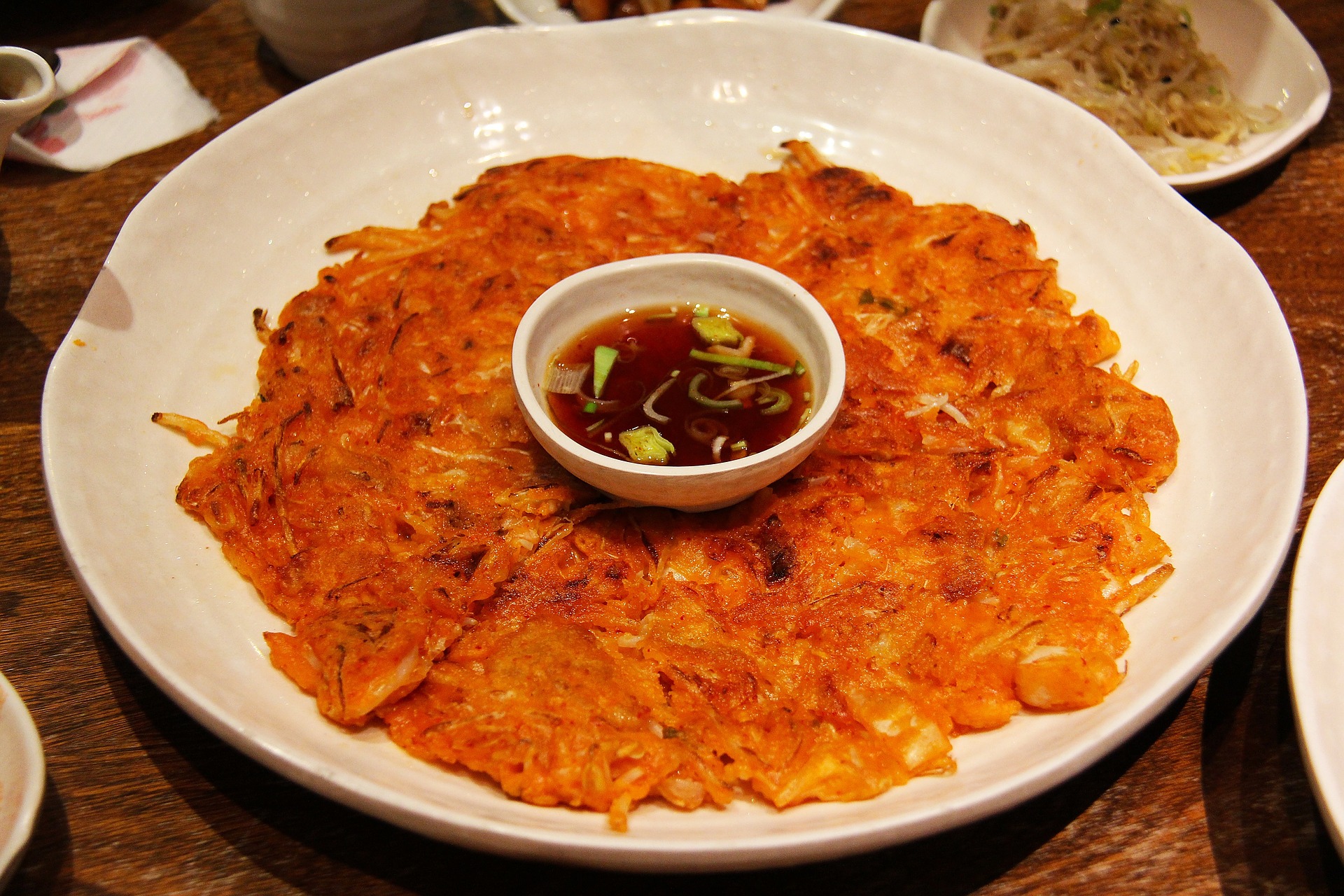by Sharon Quercioli
 Something I always keep in the fridge is a bunch of scallions. Not only do they taste great in everything, they are also good for you.
Something I always keep in the fridge is a bunch of scallions. Not only do they taste great in everything, they are also good for you.
Scallions are great for your eyes.
One of the best things about scallions is that they’re great for your eyes. They have a protein called rhodopsin, which is packed full of Vitamin A. Rhodopsin helps your retinas absorb more light. So, this will help prevent night blindness as well as sharpen your daytime vision. The vitamin A that is found in scallions can prevent various eye disorders like corneal ulcers and cataracts as well.
Scallions can boost your immune system.
Scallions have the ability to improve your immune system as a whole. Health experts say that the phytochemicals that you find in scallions (especially flavonoids like quercetin and anthocyanin) are great for your immune system. There was even a study in the American Journal of Clinical Nutrition, which said that those specific flavonoid compounds can help prevent cancer.
 Scallions can reportedly prevent cancer.
Scallions can reportedly prevent cancer.
Flavonoid can prevent cancer by inhibiting a specific enzyme, which has a tendency of releasing free radicals into your body. The vitamin A found in scallions can help prevent lung cancer.
Scallions can help keep your heart healthy.
The vitamin A found in scallions are great for your heart, as is the vitamin C found in it as well. They are both antioxidants and can protect your cellular tissue and DNA from free radicals. That’s great for you and your cardiovascular health. Vitamin C also helps reduce high blood pressure, which also helps reduce your risk of heart disease.
 Scallions can help keep your bones strong and healthy.
Scallions can help keep your bones strong and healthy.
Dairy products like milk are well-known and associated with bone health, but did you know that scallions can help improve the strength of your bones also? Scallions are filled with vitamin C and K. Both of these help improve the density of your bones. Of course, if you have a healthy diet filled with vitamins C and K, you are less likely to have bone diseases like osteoporosis and arthritis.
How to grow scallions at home.
Scallions aren’t difficult to grow in your garden. I love growing them. Buy a bunch with some developed seeds. Cut the bottom half of the scallions off, and plant them in rich soil that is free of weeds and moist. Make sure the temperature is fairly temperate as well.
They grow with shallow root systems, so you’ll need to make sure you’re protecting them well from weeds and that you water them regularly. Do a bit of shallow watering as they are growing. Luckily, they have a much shorter growth period than other forms of onions.
After planting them outdoors (optimum time about a month before spring ends, unless you can plant them in a pot and move them indoors when the weather changes). They should be about a fourth of an inch deep and about a half an inch apart.
My Favorite Scallion Recipe
Scallions are an incredibly versatile food, which you can have with breakfast (as a topper for scrambled eggs), lunch (to top your salad or in healthy soups), or with dinner (to help spice up some brown rice). But did you know you can put them in pancakes as well?
Kimchi Pancakes
 In America, pancakes are a sweet breakfast food but around Asia, pancakes are usually savory foods which can be eaten at any time of the day. This recipe is full of flavor as well as the healthy vitamins found in both scallions and kimchi: vitamins A, and C. Kimchi is also full of vitamin B and the same “healthy bacteria” (also known as lactobacilli) found in fermented foods like yogurt. I know it sounds funny but give them a try.
In America, pancakes are a sweet breakfast food but around Asia, pancakes are usually savory foods which can be eaten at any time of the day. This recipe is full of flavor as well as the healthy vitamins found in both scallions and kimchi: vitamins A, and C. Kimchi is also full of vitamin B and the same “healthy bacteria” (also known as lactobacilli) found in fermented foods like yogurt. I know it sounds funny but give them a try.
The things that you’ll need:
- Two and a half cups of flour (all-purpose works great but you can try a mixture of all-purpose and whole wheat)
- Two and a half cups of water
- A half of a teaspoon of ground sea salt
- A large egg (beaten well)
- Two cups of kimchi (chopped coarsely)
- A tablespoon of kimchi liquid/juices
- Two chopped scallions
- A red chili (chopped, optional) or a dash of cayenne
- Some grapeseed oil for cooking
What you’re going to do with those things:
- Sift the flour and the salt together.
- Add the water and whisk it well
- Add the egg (already beaten) chopped kimchi, kimchi liquid, onions, and the chili or the cayenne. Mix together.
- Keep the mixture cold while you warm your pan. You can either put it in the fridge or put the bowl into a bigger bowl, which has ice in it. Alternatively, you can put about three ice cubes in the bowl without having to worry about it watering down the batter too much while you’re waiting.
- Preheat the pan (on high) until it is warm and drizzle the grapeseed oil on it. Make sure you lubricate the pan well, so the pancakes don’t stick. You can also use an oiled griddle (which is my preference). Griddles allow for multiple pancakes to cook at once. Cook on medium to low temperature.
- Ladle the mixture (one scoop) into the pan or griddle.
- When the pancake is about 70% cooked, it should be solid enough to flip. Watch the pancake. As it cooks, it will get darker (orange instead of a pale orange/peach color) around the edges as it cooks.
- Don’t be afraid to flatten them a bit with your spatula. They should caramelize a bit before you take them out of the pan.
- When both sides are cooked, take it out of the pan. You can cut them into bite-sized bits before serving but you don’t have to.
- You can make about 4 large pancakes with this recipe. The pancakes should be easier to manage (in the pan/griddle) if you make smaller pancakes.
